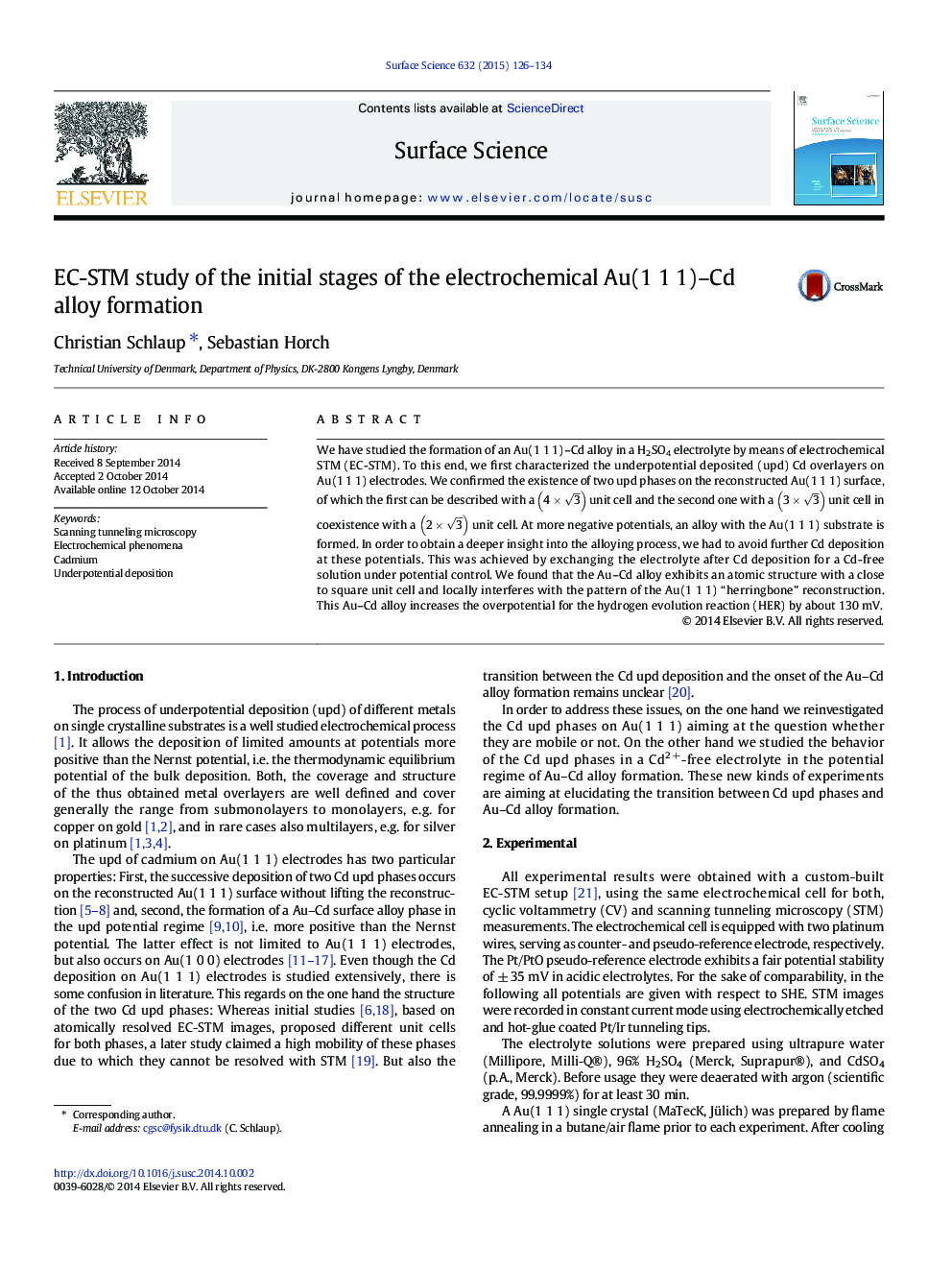| Article ID | Journal | Published Year | Pages | File Type |
|---|---|---|---|---|
| 5421998 | Surface Science | 2015 | 9 Pages |
Abstract
We have studied the formation of an Au(1 1 1)-Cd alloy in a H2SO4 electrolyte by means of electrochemical STM (EC-STM). To this end, we first characterized the underpotential deposited (upd) Cd overlayers on Au(1 1 1) electrodes. We confirmed the existence of two upd phases on the reconstructed Au(1 1 1) surface, of which the first can be described with a 4Ã3 unit cell and the second one with a 3Ã3 unit cell in coexistence with a 2Ã3 unit cell. At more negative potentials, an alloy with the Au(1 1 1) substrate is formed. In order to obtain a deeper insight into the alloying process, we had to avoid further Cd deposition at these potentials. This was achieved by exchanging the electrolyte after Cd deposition for a Cd-free solution under potential control. We found that the Au-Cd alloy exhibits an atomic structure with a close to square unit cell and locally interferes with the pattern of the Au(1 1 1) “herringbone” reconstruction. This Au-Cd alloy increases the overpotential for the hydrogen evolution reaction (HER) by about 130Â mV.
Related Topics
Physical Sciences and Engineering
Chemistry
Physical and Theoretical Chemistry
Authors
Christian Schlaup, Sebastian Horch,
